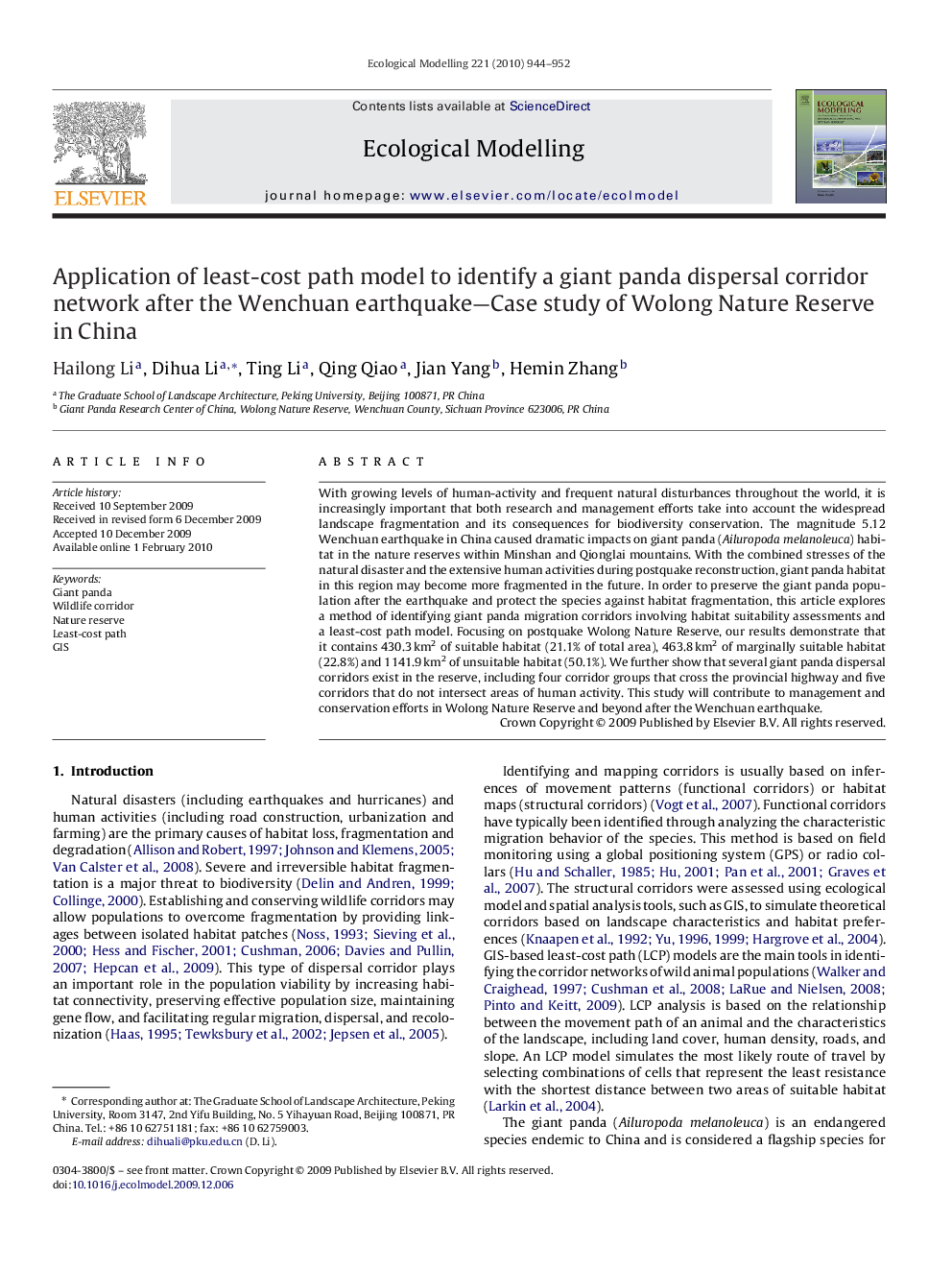| Article ID | Journal | Published Year | Pages | File Type |
|---|---|---|---|---|
| 4377430 | Ecological Modelling | 2010 | 9 Pages |
Abstract
With growing levels of human-activity and frequent natural disturbances throughout the world, it is increasingly important that both research and management efforts take into account the widespread landscape fragmentation and its consequences for biodiversity conservation. The magnitude 5.12 Wenchuan earthquake in China caused dramatic impacts on giant panda (Ailuropoda melanoleuca) habitat in the nature reserves within Minshan and Qionglai mountains. With the combined stresses of the natural disaster and the extensive human activities during postquake reconstruction, giant panda habitat in this region may become more fragmented in the future. In order to preserve the giant panda population after the earthquake and protect the species against habitat fragmentation, this article explores a method of identifying giant panda migration corridors involving habitat suitability assessments and a least-cost path model. Focusing on postquake Wolong Nature Reserve, our results demonstrate that it contains 430.3Â km2 of suitable habitat (21.1% of total area), 463.8Â km2 of marginally suitable habitat (22.8%) and 1141.9Â km2 of unsuitable habitat (50.1%). We further show that several giant panda dispersal corridors exist in the reserve, including four corridor groups that cross the provincial highway and five corridors that do not intersect areas of human activity. This study will contribute to management and conservation efforts in Wolong Nature Reserve and beyond after the Wenchuan earthquake.
Related Topics
Life Sciences
Agricultural and Biological Sciences
Ecology, Evolution, Behavior and Systematics
Authors
Hailong Li, Dihua Li, Ting Li, Qing Qiao, Jian Yang, Hemin Zhang,
